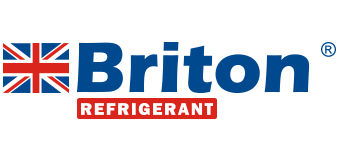High efficiency and low GWP drop-in replacements for R404A and R22
As part of its continuous research into replacements for Ozone Depleting Substances and low Greenhouse Warming Potential (GWP) refrigerants, Refrigerant Solutions Ltd (RSL) has developed non flammable and energy efficient drop-in alternatives for both R22 and R404A. These new products are RS-50 (R442A), which replaces R404A and RS-70, which replaces R22.
RS-50 (R442A) has a Global Warming Potential (GWP) of less than one half of R404A together with significantly higher efficiency capacity. Independent university tests carried out under identical conditions on RS-50 (R442A) and five other refrigerants, including R404A, R407A, R507, R407F and R22, demonstrated the considerably higher energy efficiency and cooling power of RS-50 compared to the other refrigerants:
| R407F | R407A | RS-50 | R507 | R404A | R22 | ||||
| P evaporation
( bar) |
1.35 | 1.3 | 1.35 | 1.7 | 1.64 | 1.27 | |||
| P condensation (bar) | 16.1 | 14.8 | 16.2 | 17 | 16.05 | 12.68 | |||
| P high/P low | 11.93 | 11.33 | 12 | 10 | 9.78 | 9.98 | |||
| Discharge temp (°C) | 85 | 82 | 83 | 79 | 78 | 85 | |||
| Cooling capacity (W) | 1252 | 935 | 1477 | 1090 | 992 | 1263 | |||
| Coefficient of Performance | 1.76 | 1.6 | 1.94 | 1.52 | 1.37 | 1.89 | |||
The high energy efficiency and capacity of RS-50 has been confirmed in a series of field trials, eg replacing R404A with RS-50 at supermarkets Auchan Meriadeck, Bordeaux; 8 a Huit, Lambres Lez Douai; Sorli Discau Barcelona and others, and at McVities, Glasgow and S K Foods, Middlesbrough. In all these cases, energy efficiencies exceeding R404A compared to R404A were experienced.
RS-50 can be used to replace R404A in both new and existing equipment. No changes to the hardware are necessary. Because the properties of RS-50 are similar to R404A, it is suitable for use in many of the applications where R404A is commonly found, including supermarket display cases, cold stores, freezers, refrigerated transport, ice machines, cold storage, transportation of foodstuffs, freezer cabinets, beer cellars, freeze dryers and environmental test chambers. R22 is also used in many of these refrigeration applications, where RS-50 can be a suitable replacement.
RS-70 is a non-flammable drop-in replacement for R22, which has been designed to have the lowest possible Global GWP consistent with high thermodynamic performance having a similar cooling capacity and Coefficient of Performance (COP) as R22. Consequently, RS-70 can be used to replace R22 in both air conditioning and refrigeration applications across the temperature range where R22 is commonly used. RS-70 is compatible both with the traditional mineral and alkylbenzene oils, and also the polyol ester lubricants, so that there is no need to change the existing lubricant in the system when retrofitting to R22. With its high technical performance, compatibility with all lubricants and low GWP, RS-70 is an excellent choice to replace R22 as the end of R22 approaches as mandated under the F-gas regulation in the European Union.
The GWP of RS-70 is lower than all other drop-in replacements for R22 available on the market, including R438A, R417A, R422B, R422D, R417B and others. The GWP of RS-70 is also lower than R427A, R407A, R407F and R421A. However, this has not been achieved by sacrificing performance since RS-70 is similar to R22 in terms of cooling capacity, COP, mass flow, compression ratio and discharge pressure while having a lower discharge temperature. Accordingly, RS-70 is an excellent choice to replace R22 in the majority of applications where R22 is found
– See more at: http://www.acr-news.com/high-efficiency-and-low-gwp-drop-in-replacements-for-r404a-and-r22#sthash.qoB8Pqxb.dpuf

